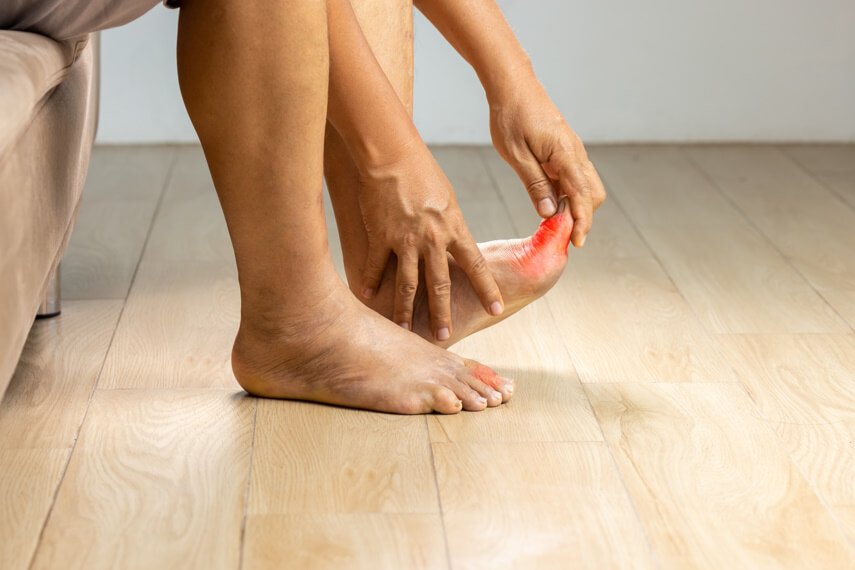How to Manage Diabetic Foot: Essential Tips From Dr. Ashutosh Shah
Diabetic foot conditions are a major concern for individuals living with diabetes, potentially leading to severe complications if not properly managed. Dr. Ashutosh Shah, a leading figure in diabetic foot care in Surat and a board-certified Plastic & Cosmetic Surgeon with more than 20 years of experience offers his expert advice on preventing, treating, and understanding diabetic foot conditions. Here’s a comprehensive guide to help you navigate the complexities of diabetic foot care. If you are having a Diabetic Foot Problem or if anyone in your family or friend circle has having diabetic foot problem then you must read this blog.
How to Prevent Diabetic Foot Ulcers
Preventing diabetic foot ulcers starts with comprehensive foot care. Regular inspections for any cuts, blisters, or signs of infections are crucial. Dr. Shah emphasizes the importance of:
01 Maintaining controlled blood sugar levels to prevent nerve damage
02 Wearing properly fitted shoes to avoid pressure points
03 Keeping feet clean and moisturized
How Diabetic Foot Ulcers Occur and Start
Diabetic foot ulcers typically begin with nerve damage caused by high blood sugar levels, which reduces sensation in the feet. This makes it easier to overlook injuries, leading to wounds that can develop into ulcers.
How to Treat Diabetic Foot and Wounds
Treatment of Diabetic Foot involves several key strategies:
01 Cleaning the wound meticulously to prevent infection
02 Using antibiotic dressings or medications as prescribed
03 Offloading pressure from the wound area to aid healing
How to Perform Diabetic Foot Exams
A diabetic foot exam, essential for early detection of potential problems, should include:
01 Checking for any skin breaks, changes in skin color, or swelling
02 Testing for sensation using a monofilament tool
03 Inspecting for any structural abnormalities
How Is Diabetic Foot Ulcer Diagnosed?
Diagnosis usually involves a physical examination and assessing symptoms. In some cases, Dr. Shah may recommend additional tests like X-rays to check for bone involvement or infections.
How to Care for Your Diabetic Foot?
Daily foot care is vital for preventing complications. This includes:
01 Washing your feet with mild soap and lukewarm water
02 Drying them gently, especially between the toes
03 Applying moisturizer to avoid dry skin
04 Avoiding walking barefoot to prevent injuries
How Long Does Diabetic Foot Last?
The duration of a diabetic foot condition can vary widely depending on the severity and treatment. Some ulcers may heal within weeks, while others may take longer, especially if infection or poor circulation is involved.
How Often to Visit a Diabetic Foot Doctor
Regular check-ups with a diabetic foot specialist are recommended at least once a year for a comprehensive exam. More frequent visits may be necessary if you have existing foot problems or signs of neuropathy.
Best Practices for Diabetic Foot Care
01 Check your feet daily for any signs of injury or infection.
02 Choose the right footwear that provides support and prevents injuries.
03 Control your blood sugar levels to reduce the risk of nerve damage.
04 See a Diabetic Foot specialist regularly for early detection and management of any foot issues.
Conclusion
Effective management of diabetic foot conditions requires a proactive approach to care, regular monitoring, and professional medical advice. Dr. Ashutosh Shah and his team at Surat Diabetic Foot and Ulcers Clinic are committed to providing the best treatment and support for individuals with diabetic foot concerns. Remember, taking care of your feet is a crucial part of managing diabetes, and with the right precautions, many complications can be prevented.
For those seeking “diabetic foot care near me,” Dr. Shah's Surat Diabetic Foot And Ulcers Clinic
located at Adajan Surat represents a beacon of hope and expertise. His dedication to patient education and preventative care ensures the best possible outcomes for those under his care



.jpg)
